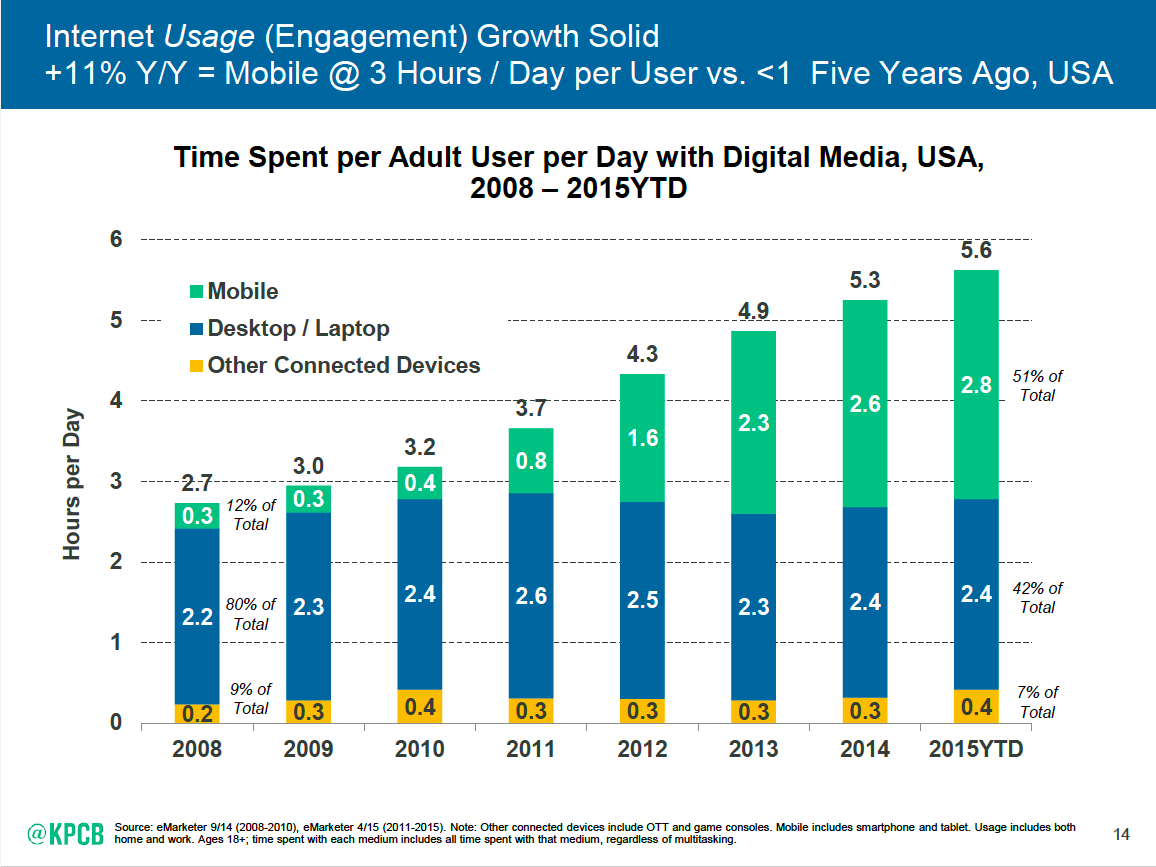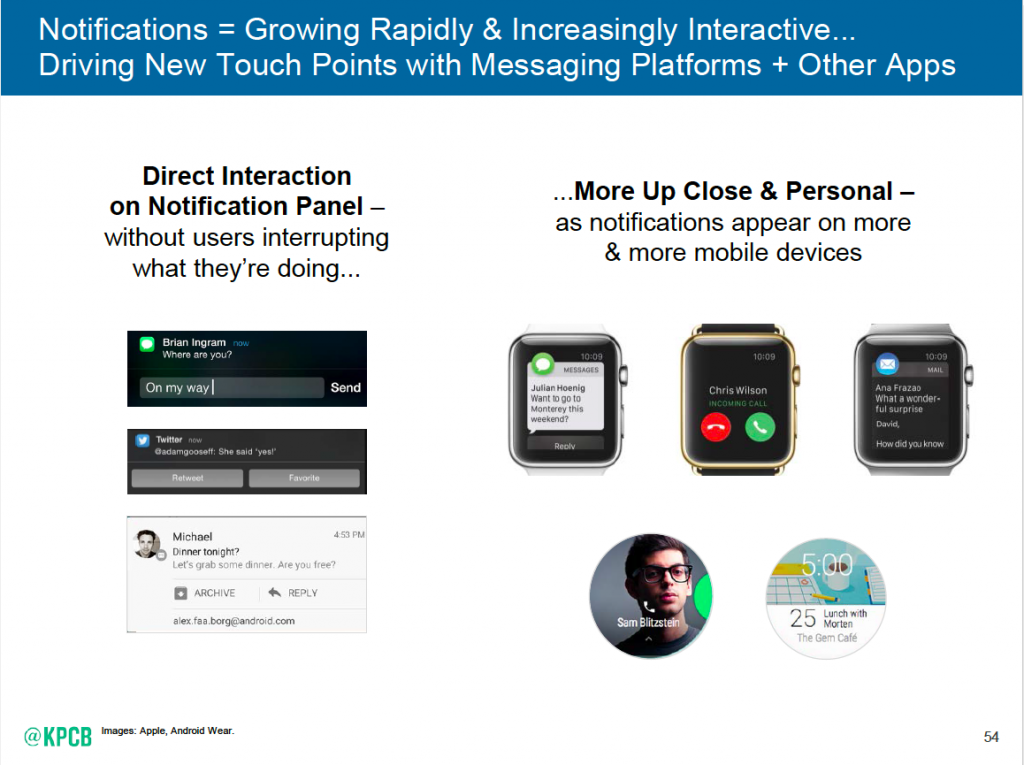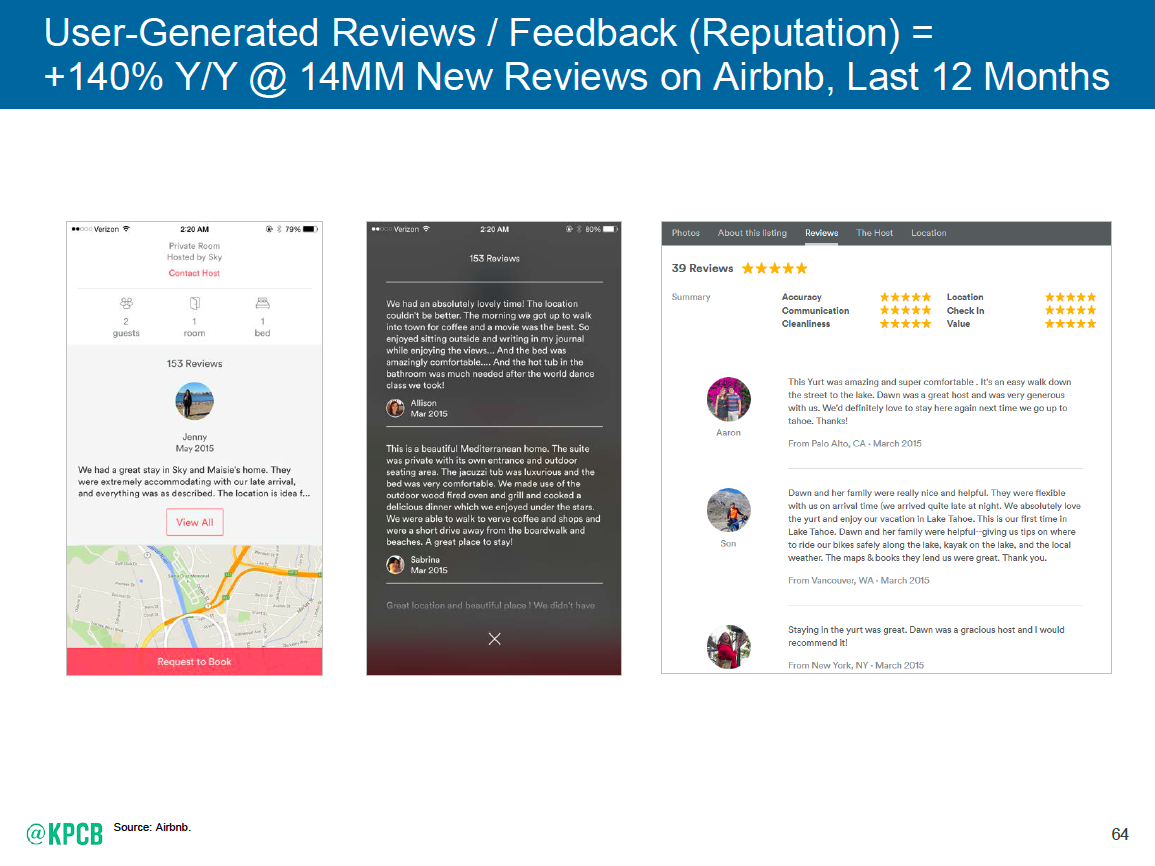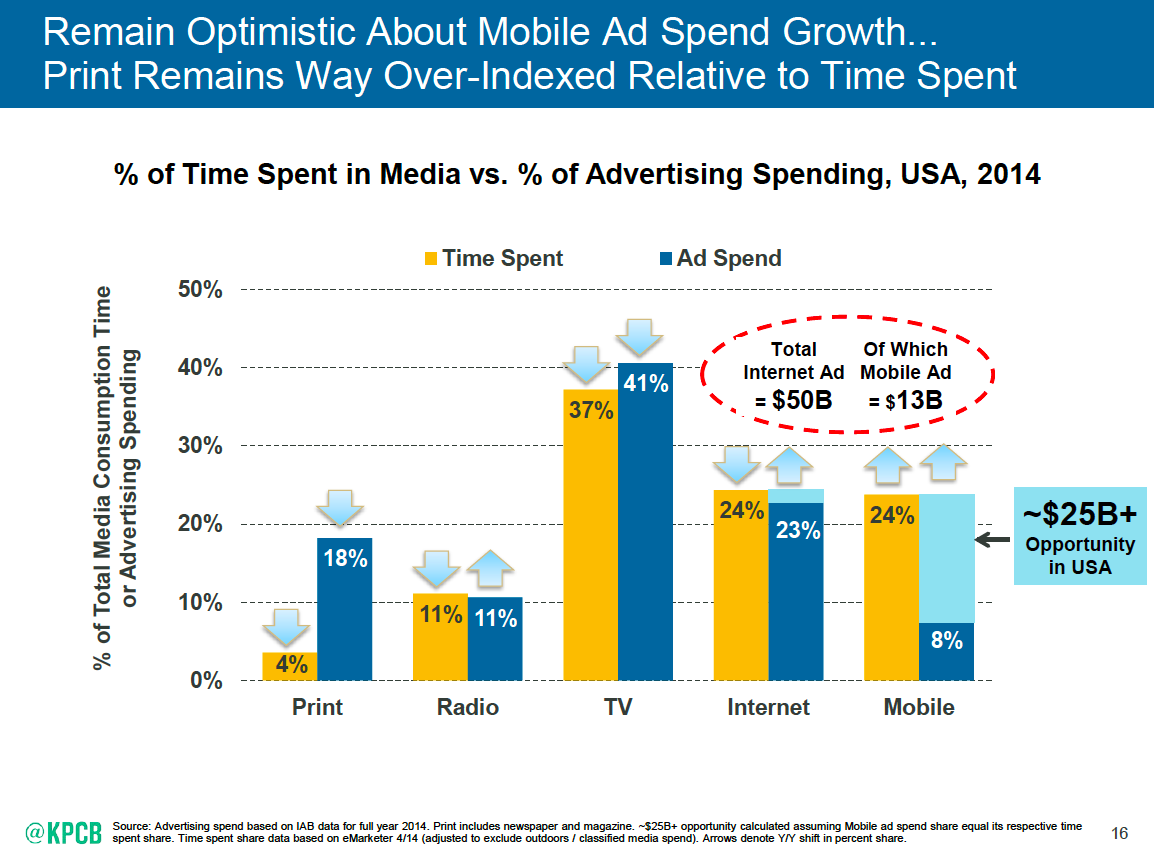The holidays are fast approaching, and that means one thing for retailers – more sales. But have retailers really done enough to maximize revenues this holiday season?
Holiday shoppers no longer have to fight through crowded shopping malls to find products, compare sales, and make a purchase – they can do all, or some portion of that, from the comforts of their own home (or at work, or at school, or on the bus, etc). Whether or not the final purchase happens in-store, the path to purchase for today’s connected consumers is digitally-driven.
With retail’s busy season just around the corner, let’s take at one of the most influential reports of the year, Mary Meeker’s annual Internet Trends report. We pulled the 5 trends with the most significant impact on the retail industry so that you can determine if your brand is meeting the needs of 2015’s connected consumer.
1. Mobile Internet Usage
Internet usage growth is solid, especially on mobile where the average US adult spends 3 hours per day consuming digital media, compared to less than an hour 5 years ago. Mobile has reshaped the customer journey, creating a constantly connected consumer who expects immediate results in what Google describes as micro-moments – intent-driven moments of decision-making and preference-shaping. As Mary Meeker reports, consumers are spending more than 5 hours online everyday, thus retailers need to be present in those micro-moments to engage consumers and win sales.
2. Notifications
The adoption of notifications is growing rapidly and they’re becoming increasingly interactive. Retailers can take advantage this high adoption rate through both in-app notifications and web push notifications. These real-time messages pop-up in the user’s notification panel, ensuring that they are visible in the exact instant when they can provide timely, context-based information – unlike email which gets lost in overflowing inboxes. Brands are recognizing the value of web push as it provides the engagement potential previously limited to apps, coupled with the unlimited reach of the web. Early adopters like Facebook, VICE News and Beyond The Rack have already deployed web push to effectively engage their audiences, and many brands are quickly following suit.
3. User-Generated Reviews
The number of online user-generated reviews is increasing, highlighted by Airbnb’s culmination of 14M new reviews in the last 12 months. The good news for retailers is user-generated reviews can help build trust with consumers and drive purchases. User reviews increase conversions by providing social proof to eliminate any doubts the potential customer may have, which can be paramount in online shopping where the customer can’t inspect the tangible product . Even when shopping offline, online reviews can be very influential. Nearly 60% of consumers check product reviews on their mobile device while in-store, to help convert those consumers, retailers should make it very easy them to post and find reviews online. This could include a personalized push notification, prompting a customer to review a recently purchased product, and mobile-optimized product display pages with right-sized buttons, large text, and reviews visible above the fold (at least partially).
4. Mobile Advertising
Consumers are very familiar with the glossy two-page ad spreads in magazines – but they’re over it. While consumers are only spending 4% of their media consumption time in print, retailers are still clinging to this old-school advertising medium by attributing 18% of their ad spend to it. Meanwhile, mobile accounts for 24% of media consumption time and only 8% of ad spend – this represents a $25B opportunity! With new ad functionalities like Pinterest Cinematic Pin, Facebook Carousel Ad and Google Local Inventory Ad, retailers have the opportunity to be creative and offer mobile-optimized ads that are fun and interactive. These ads also enable retailers to drive consumers further along the path to purchase. While a print ad is a dead-end, a user can click on a mobile ad and land on the product display page to learn more about the product and even complete the purchase.
5. Millennials
Millennials are one of the largest and most influential markets in the world, and as such, retailers strive to deliver a shopping experience in line with their behaviours and expectations. Despite this effort, many still struggle to effectively engage these consumers. With 87% of Millennials stating that their smartphone never leaves their side, it’s clear that mobile is a key component of their shopping journey. As such, a mobile-optimized website or native app is a good place for retailers to start – but it won’t get you across the finish line. Millennials also expect personalized engagement and a seamless shopping experience that integrates all online and offline channels. When retailers take a holistic approach to optimizing the shopping experience, they have the opportunity to engage millennials, drive purchases, and build loyalty.
Internet Trends 2015
Above is a snapshot of Mary Meeker’s Internet Trends report, it highlights those trends most relevant to the retail industry.





